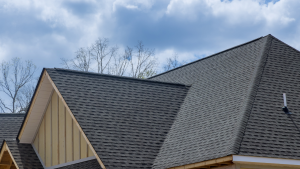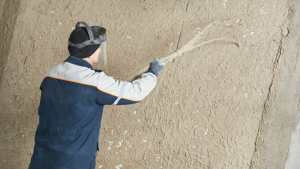Most people’s spring to-do lists do not include roof maintenance, yard work, or spring cleaning. However, as winter comes to a close, your roof should be your first concern for home maintenance.
Winter storms may damage your roof substantially, putting structural stability at risk. If you want your roof to last through the winter, give it some post-winter care.
Here are seven maintenance tips to help weather the winter and prepare your roof for spring.
1. Have Your Roof Evaluated
Along with yard chores and spring cleaning, most people’s spring to-do lists seldom include roof maintenance. However, when winter draws close, you should pay special attention to your roof regarding house care.
Winter storms may damage your roof, jeopardizing its structural integrity. Take some post-winter upkeep of your roof if you want it to last through the winter.
The following seven maintenance suggestions will help you weather the winter and prepare your roof for spring.
2. Check for Interior Signs of Water Damage
Sometimes it may be challenging to spot water damage on your roof from the outside. However, there may be obvious evidence of water damage throughout your interiors. Look for water spots on your ceiling. These may appear as black stain rings. Additionally, keep an eye out for paint bubbling or peeling on your walls.
Call your contractor as soon as you see any signs of water damage to finish repairs.
3. Clean Your Gutters
Your gutters must be cleaned to do preventive maintenance before spring. Your gutters may have become clogged with the debris throughout the winter, making it difficult for water to leave. You don’t want all that debris in your gutters in the spring.
Water will stand on your roof or overflow if your gutters are clogged in the spring, causing structural damage to your home. If you wish to prevent future clogs, consider installing a gutter guard.
4. Check for Mold and Algae
The moisture on your roof throughout the winter months produces ideal circumstances for mold and algae growth. Mold and algae may harm your health and destroy your roof if left untreated.
Make sure that any mold or algae on your roofing are removed.
5. Trim Your Trees
Overhanging branches, falling leaves, and other debris may break and fall on your roof during rainfall. If this occurs, your roof may sustain substantial damage. Furthermore, moisture from dropped leaves on your roof may cause mold growth and damage your roof.
6.Replace or Repair Damaged Shingles
With the spring rains, you want to avoid continuously wiping pools of water off your floor, which broken shingles may create. Water leaks may also cause damage to your home’s ceiling, attic, and walls. Damaged shingles also reduce the insulating characteristics of your roof since they expose the protective membrane to damage.
To prevent the problems outlined above, have your roofing professional replace or repair broken shingles before spring.
7. Examine Your Fascia Board and Flashing
The fascia is a wooden or metal board that covers the exposed trusses and rafters on the lower ends of your roof. On the other hand, flashing is a thin metal material used on roof connections, such as those found around chimneys, valleys, and between roofs.
Flashing and fascia prevent water from entering your house via gaps in the roof; therefore, if they are damaged, they must be repaired immediately to avoid leaks.
Preventative roof maintenance is critical for extending the life of your roof and keeping your home secure.
To keep your roof in good shape as spring approaches, contact Jersey Shore Stucco right away for post-winter repairs and upkeep.




